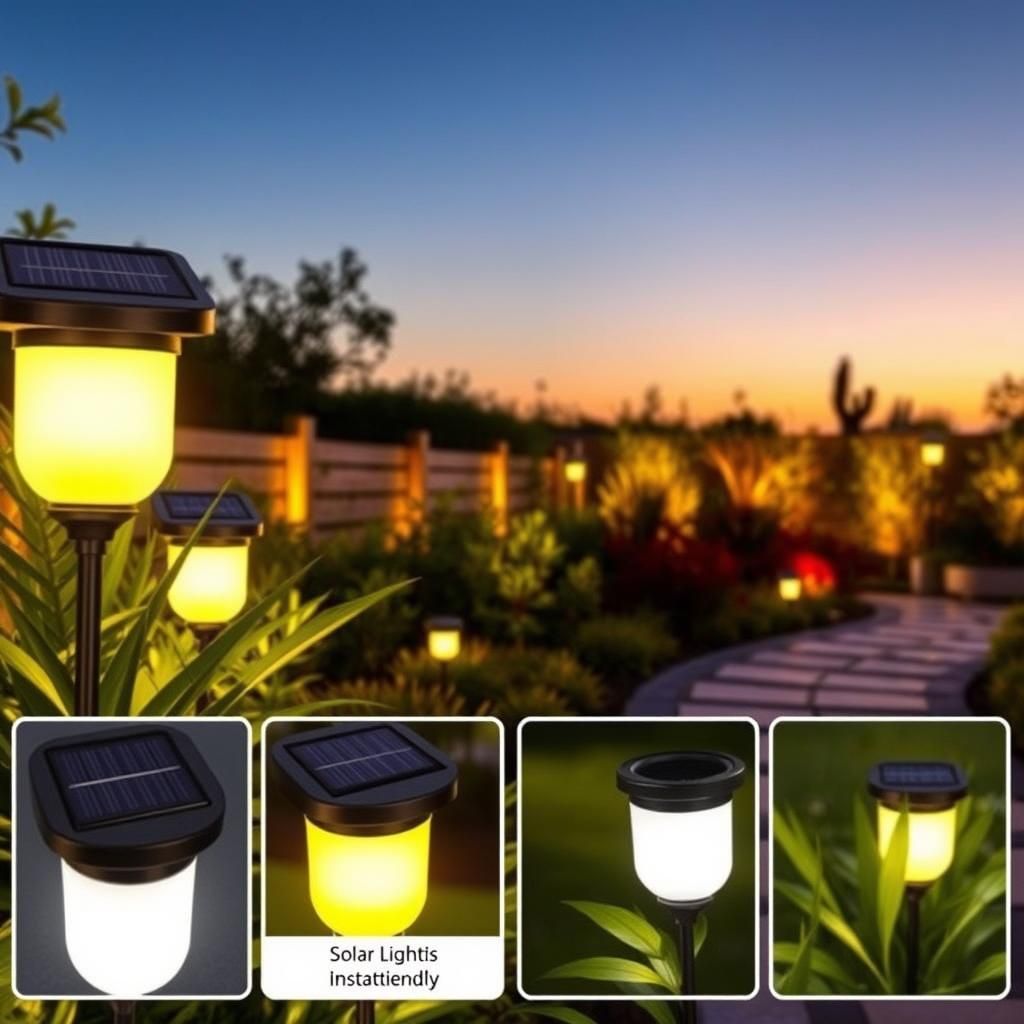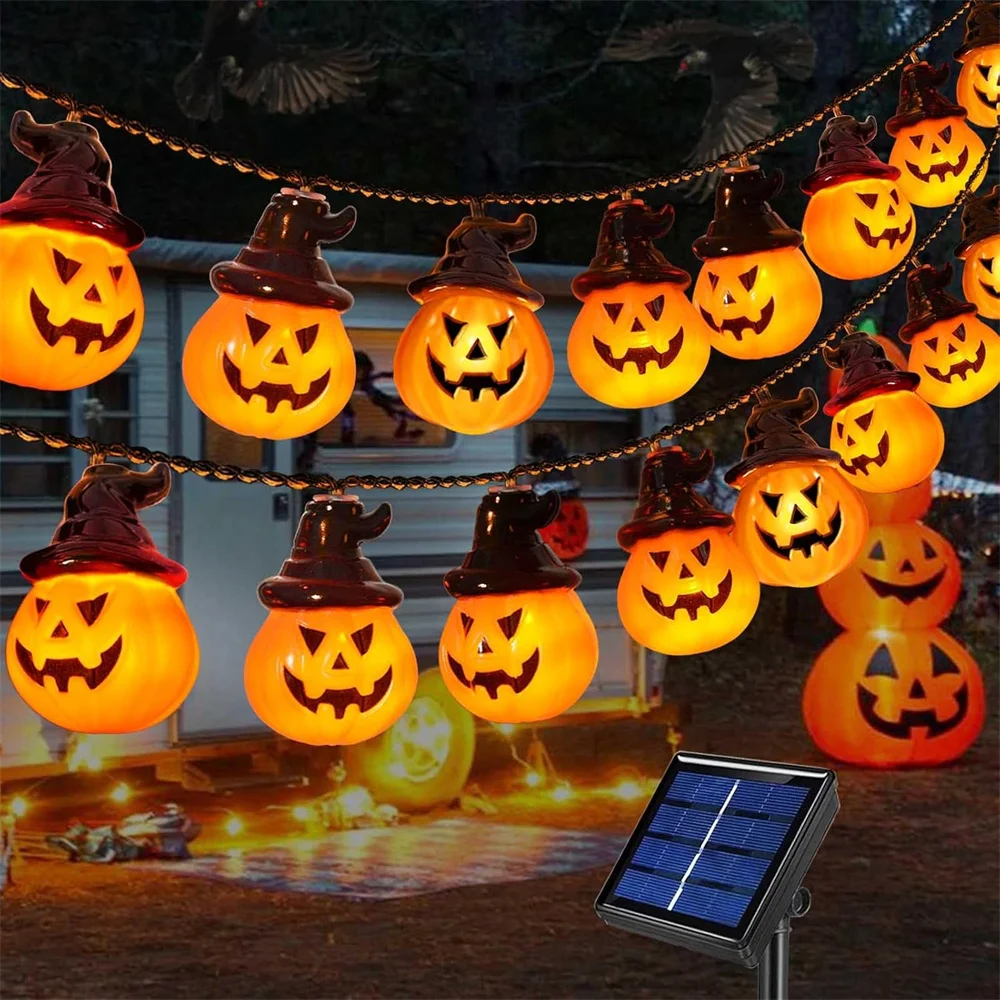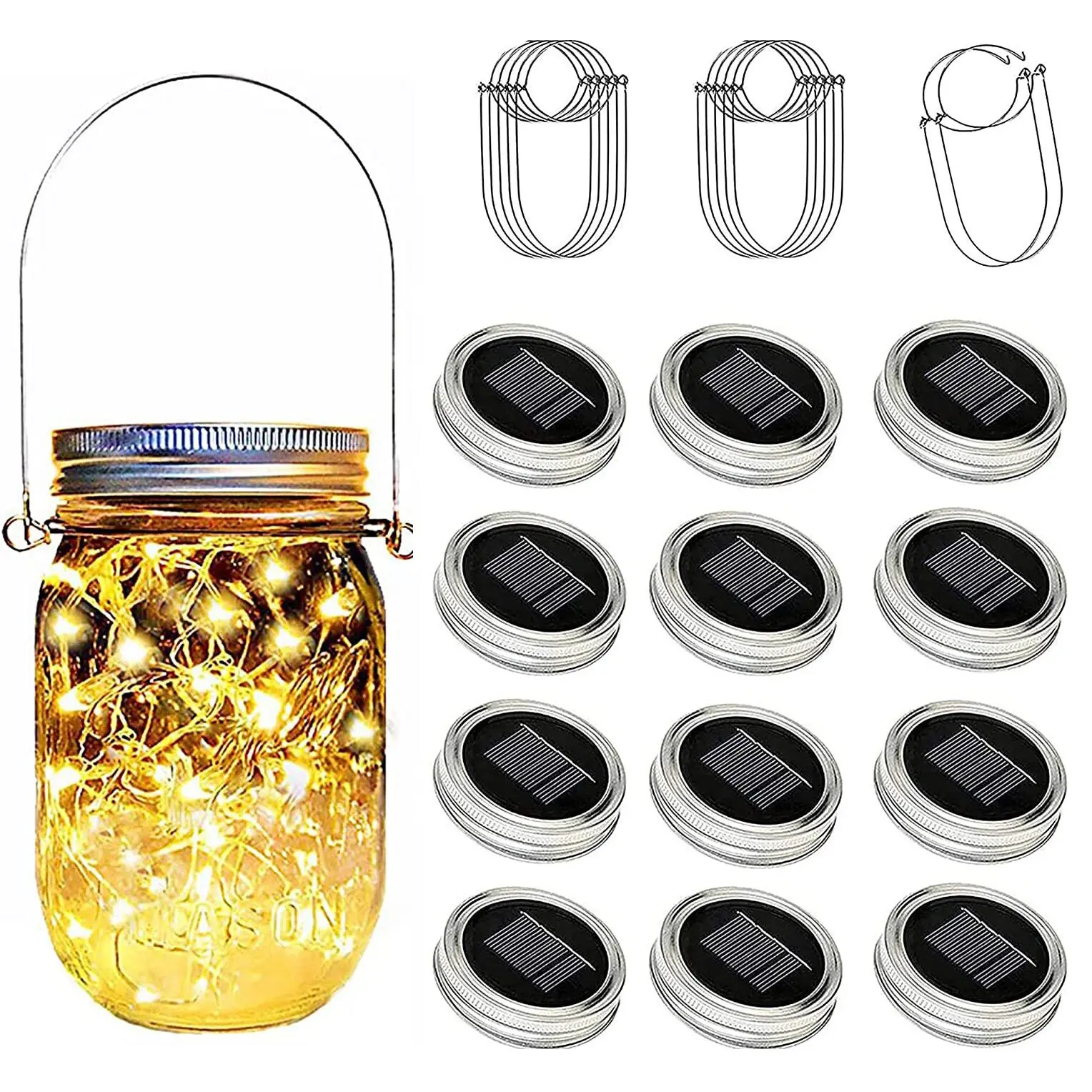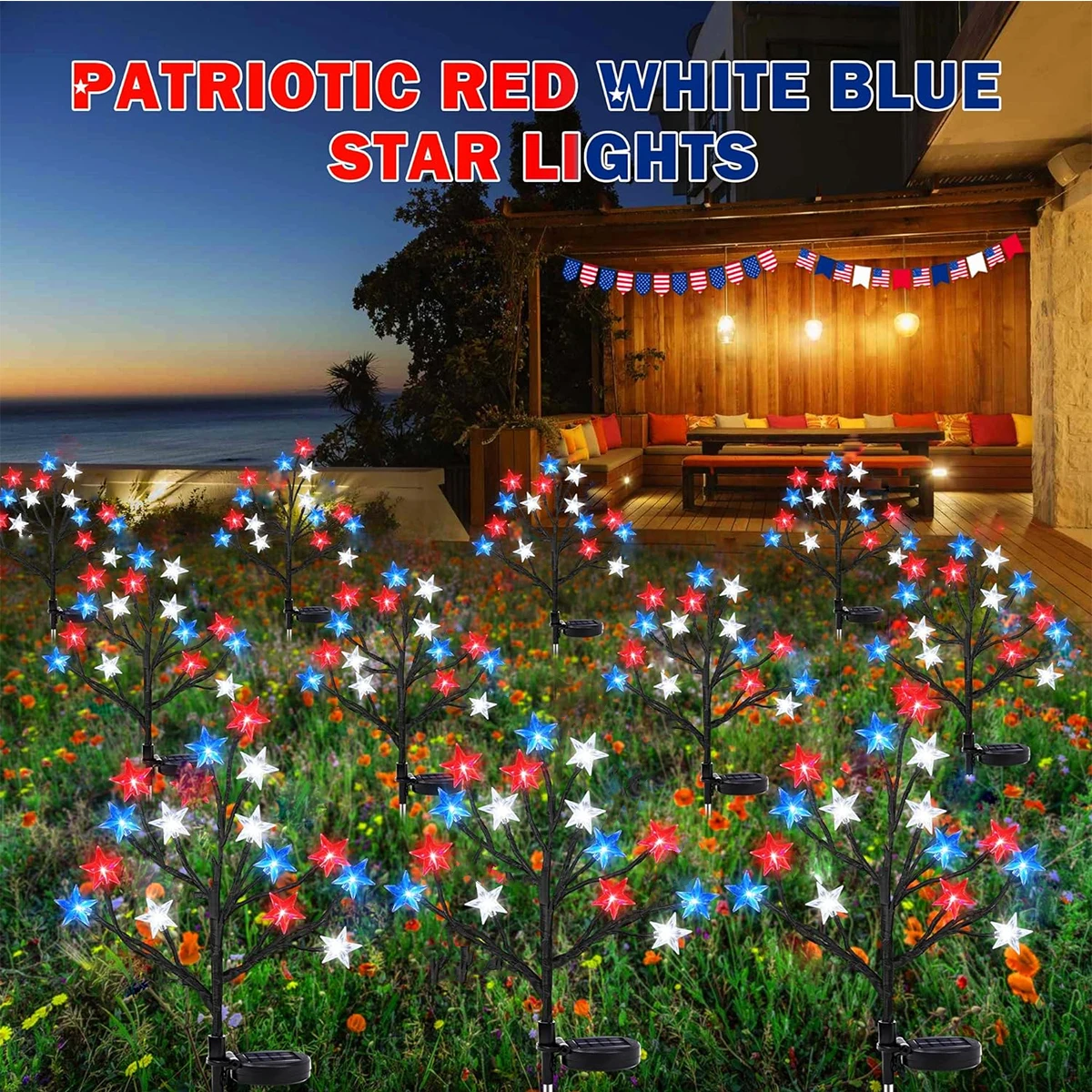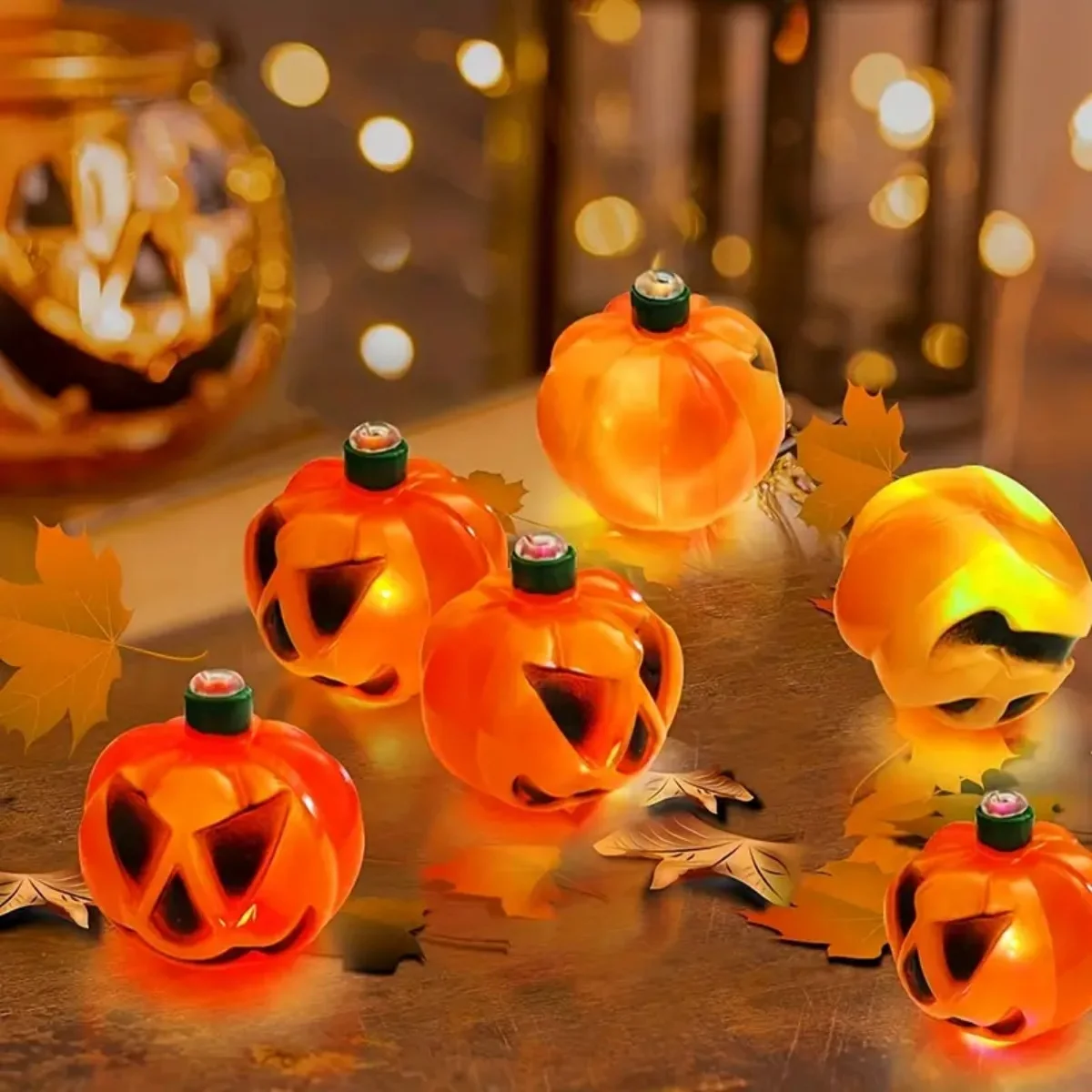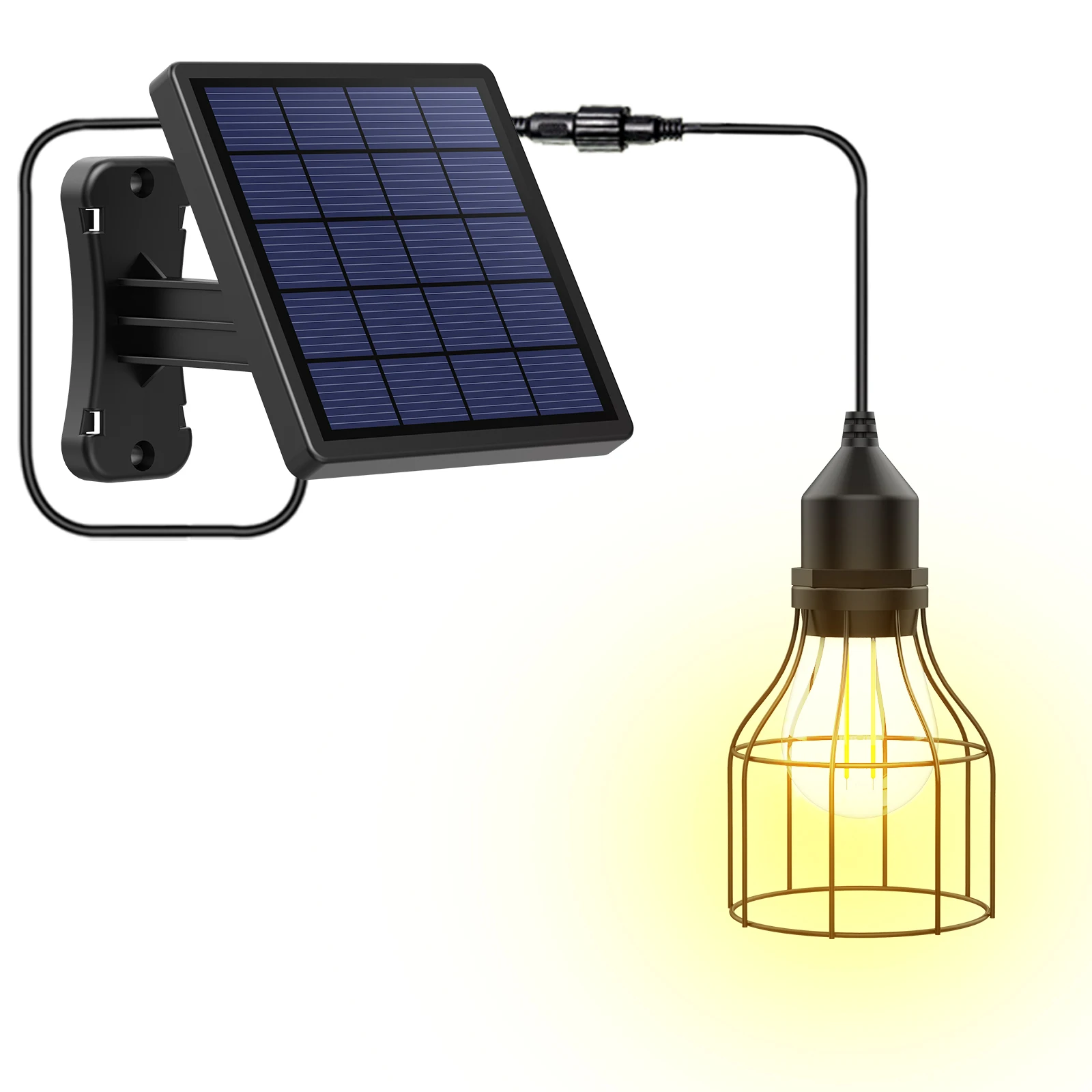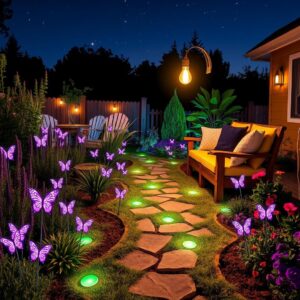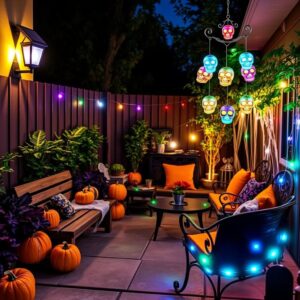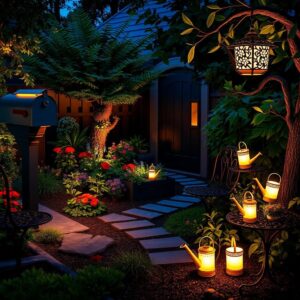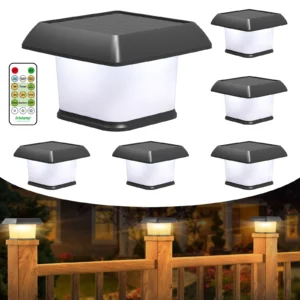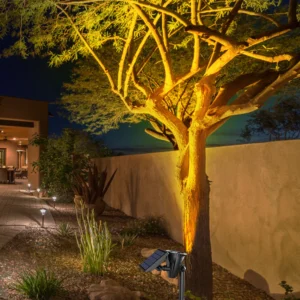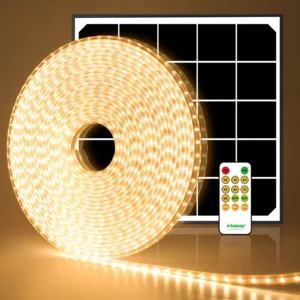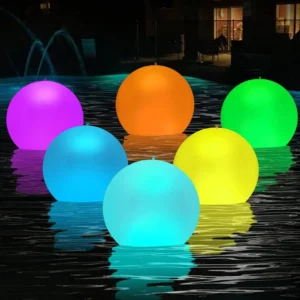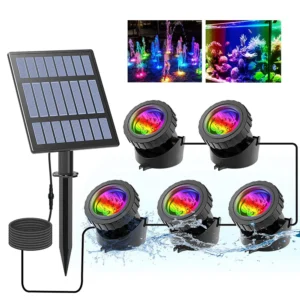Resin Elf Reading Solar Lights for Garden Patio Decoration
Introduction
Solar lights have quietly taken over outdoor lighting, offering a simple, green alternative to traditional bulbs that rely on sockets and wires. Whether lining a garden path or casting a soft glow over a patio, solar-powered fixtures merge functionality with eco-friendly charm. Their growing popularity isn’t just a trend—it’s a move toward smarter, more sustainable living spaces. But if you’re thinking about inviting these sun-charged lanterns into your outdoor retreat, one question likely tops your list: how long do solar lights last?
Understanding the lifespan of solar lights is more than just a curiosity—it’s essential for making wise choices and protecting your investment. Unlike conventional lighting, solar lights depend on multiple parts working in harmony: solar panels soaking up sunlight by day, rechargeable batteries storing that energy, and LEDs casting their glow once dusk falls. Each element has its own clock ticking down, influenced by quality, use, and the environment. Knowing what determines their longevity can save you from the frustration of flickering or failed lights mid-season.
Maintenance plays a key role, too. With a little care—cleaning panels, swapping out batteries, and thoughtful placement—you can keep those tender rays flowing and your garden illuminated night after night. So, as we unravel how long solar lights last, expect insights that blend straightforward facts with practical tips, helping you light up your yard the smart way. Ready to demystify the magic behind solar light durability? Let’s dive in and shed some light on what you need to know.
Solar Pumpkin Lights for Outdoor Halloween Decorations
Understanding Solar Light Lifespan
When you wonder, “how long do solar lights last?” the straightforward answer is—it depends. Most solar lights have a lifespan of about 2 to 6 years. That’s a decent stretch for outdoor lighting that endures rain, sun, wind, and the occasional clumsy footstep. But if you invest in a premium model and take care of it, some solar lights can shine steadily for up to 10 years or more.
Why the big range? Quality matters. Cheaper solar lights often come with lower-grade batteries and less durable materials, which means they fade faster and can feel more like a seasonal decoration than a long-term solution. Meanwhile, top-of-the-line solar gems use better batteries, sturdy solar panels, and weatherproof casings that shrug off the elements with ease. The difference shows not just in how long they work, but how well they perform night after night.
Speaking of batteries, they’re the heartbeat of every solar light. The rechargeable cells inside grab power from the sun during the day, then glow warmly once darkness falls. Most batteries last between 1 and 3 years before they start losing their mojo—holding less charge and dimming the light. If your solar light uses lithium-ion batteries, though, you’re in for a treat. These can keep going strong for 10 to 15 years, dramatically boosting the overall lifespan of the light.
Whether your solar lights last two years or a decade, it always boils down to the battery and build quality. New tech and better batteries mean your garden can sparkle longer, with fewer interruptions. So next time you’re picking solar lights, remember: going for quality now can save you the hassle of frequent replacements down the road. The right light won’t just brighten your evenings—it’ll be a reliable companion through many seasons of glow.
2025 Super Bright 99LED Solar Lamp – Outdoor Solar Spotlight
Factors Affecting Solar Light Durability
When it comes to how long your solar lights will glow, several key factors quietly shape their lifespan. It’s not just about the brand or style—what’s under the hood and where you place them matters a lot. Let’s strip it down to the basics and understand the three main elements affecting durability: battery quality and usage, weather and environment, and the build quality of the lights themselves.
Battery Quality and Usage Patterns
At the heart of every solar light is the battery, the unsung hero powering that soft glow after sunset. But batteries have a ticking clock. Rechargeable types—commonly NiMH or lithium-ion—deal with daily charging and discharging cycles, much like a runner training every day. Push them too hard with constant on-off cycles or cheap, low-quality batteries, and their capacity fades faster. The secret? Investing in high-quality batteries designed for solar use. They endure the cycle grind better, stretching your lights’ lifespan from a couple of years to several more. Don’t underestimate battery care—when it fades, so does your garden’s twilight magic.
Weather and Environmental Conditions
Mother Nature isn’t always kind to solar lights. Extreme heat can drain batteries prematurely, while biting cold chills their chemical reactions, reducing charging efficiency. Heavy downpours and persistent dirt or debris can smother solar panels, starving them of precious sunlight. Imagine a fogged-up window blocking the morning light—that’s what dirty panels do. Plus, excessive shade or foliage can leave your solar lights underpowered, dim, or flickering. Placing your lights with an eye on climate realities—like avoiding soggy spots or heavy shade—gives them a fighting chance to thrive night after night.
Build Quality and Components
Think of the solar light as a tiny fortress against time and weather. The sturdiness of the solar panel, the reliability of the LED bulb, and the resilience of the housing material all play a starring role. Cheap plastics may crack or fade under sun and rain, while robust metals and tempered glass panels stand firm. Efficient LEDs sip power gently, stretching battery life. The synergy between durable materials and energy-smart components means your lights won’t just survive—they’ll sparkle more consistently, season after season.
By paying attention to these factors—better batteries, smart placement, rugged design—you set your solar lights up for long-lasting performance. That little glow you cherish? It’s the reward for thoughtful choices that marry durability with simple, everyday care.
Solar Powered Mason Jar Lid Insert Fairy Lights for Decor
Solar Light Maintenance Tips for Prolonged Lifespan
Keeping your solar lights shining bright isn’t rocket science, but it does require a bit of attention now and then. Think of these lights as loyal companions lighting your outdoor sanctuary—they work best when cared for well. Here’s how to stretch their glow for years to come:
Regular Cleaning and Upkeep
Solar panels are like little energy catchers that soak up the sun’s magic to power your lights. But dust, pollen, dirt, or even bird droppings can smother their sunny feast and dull their spark. Give your solar panels a gentle wipe-down with a soft cloth and mild soapy water every few weeks. Avoid harsh chemicals or abrasive scrubbing—just enough to clear off any grime. This simple ritual lets the panels drink in sunlight freely, helping your lights shine their warmest and longest once dusk falls.
Battery Replacement and Care
The rechargeable battery inside your solar light is its heart. It stores daylight’s energy to keep your garden glowing after the sun slips below the horizon. Over time, like any battery, it wears out—its ability to hold a charge fades. If you notice your solar lights flickering prematurely or not lasting through the night, it’s a whisper from the battery that replacement is due. Most solar lights use standard rechargeable batteries, and swapping them out is usually straightforward—just follow the manufacturer’s instructions for safe removal and replacement. Refreshing the battery can breathe new life into your favorite garden accents, giving you more evenings basking in that gentle, sun-charged glow.
Optimal Installation Practices
Where you nestle your solar lights matters more than you might think. Find open spots bathed in direct sunlight throughout the day—solar panels crave unblocked sun to stock up their energy reserves. Avoid shady corners under dense trees or tucked behind garden shed shadows that starve the panels of light. Positioning your lights wisely means they’ll emerge each evening ready to cast cozy pools of illumination, guiding guests or spotlighting your favorite blooms with effortless grace.
Using Energy-Efficient Components
Most modern solar lights come with LED bulbs—tiny powerhouses that sip energy and last far longer than traditional bulbs. If you have the option, choose models featuring energy-saving modes or adjustable brightness. These clever features conserve the battery’s charge, allowing your lights to linger longer into the night without dimming prematurely. By blending energy efficiency with smart design, your garden transforms into a sustainably lit haven that’s easy on your wallet and gentle on the planet.
With these practical maintenance tips, your solar lights won’t just last—they’ll delight you season after season, weaving soft, sustainable magic across your outdoor space.
Halloween Skull Wind Chime with 6 Color Changing LED Lights
Debunking Common Myths About Solar Lights
Solar lights have come a long way, yet some myths stubbornly cling to them like shadows at dusk. Let’s clear the fog and set the record straight on the most common misconceptions that keep folks from embracing these little sun-powered wonders.
Myth: Solar Lights Don’t Work Well in Cloudy or Cold Weather
Here’s a tough truth: many people assume solar lights hibernate when clouds roll in or the temperature drops. Not so. Solar panels absorb sunlight even when it’s diffused through clouds, meaning they still charge and provide steady illumination. Cold air can actually help batteries perform better, not worse, contrary to what some think. So, imagine your garden shimmering softly, even on chilly, overcast evenings—the magic doesn’t fade just because the skies aren’t crystal clear.
Myth: Solar Lights Are Unreliable and Short-Lived
Once upon a time, yes, solar lights might have flickered out sooner than expected. But technology strides have been huge. Modern solar lights boast durable components, smarter batteries, and LEDs that last for years. Reliability isn’t a question anymore; it’s a given—if you choose quality products and care for them properly. Think of them like trusted companions lighting your path night after night, season after season.
Myth: Solar Lighting Is Expensive and Not Eco-Friendly
This one bites—solar lights are often seen as pricey novelties or, oddly, as less green than they are. Truth is, they’re a smart investment with zero electricity costs once installed. No wiring, no ongoing bills, just abundant sun doing all the work. Their eco-friendly heart beats strong, cutting down on fossil fuel use and harmful emissions. Picture your yard glowing with sustainable charm, each light a small pledge to the planet’s health.
By brushing away these myths, solar lights emerge as practical, reliable, and eco-wise solutions. They invite you to imagine a garden that doesn’t just shine but tells a story—of warmth, sustainability, and quiet endurance under the stars.
INTELAMP Solar Lamps with Remote Control 40 cm Garden Lighting 2Pack
Environmental Benefits of Sustainable Solar Lights
Imagine lighting up your garden with a soft, gentle glow that doesn’t cost the Earth—literally. Solar lights are not just charming additions to your outdoor space; they’re small heroes in the fight against environmental harm. At their core, sustainable solar lights help cut down carbon emissions by tapping into the sun’s free and abundant energy. Unlike traditional lighting that relies on electricity generated from fossil fuels, solar-powered lights work independently, drawing pure sunlight during the day and turning it into warm illumination after dusk. This shift away from grid electricity means fewer greenhouse gases released into the air, quietly shrinking your carbon footprint one twinkle at a time.
But the magic doesn’t stop there. Solar lights promote an eco-friendly lifestyle by offering an energy-wise alternative that’s easy to embrace. Their installation requires no wiring, no power outlets, and no energy bills creeping up at night. This simplicity encourages more people to swap out wasteful outdoor lights for sustainable options, collectively pushing communities toward greener living. Plus, the materials used in many solar light designs are increasingly recyclable and built to last, reducing the need for frequent replacements and keeping less junk out of landfills. Each robust solar beacon you place becomes a piece of a larger puzzle—one where gardens, neighborhood paths, and parks shine bright without draining the planet’s resources.
Over the long haul, durable solar lights shrink environmental impact by conserving energy and cutting down waste. Think of them as sustainable storytellers, lit up by the sun, whose lifespan stretches over years—sometimes a decade with proper care. This longevity means fewer batteries replaced, less manufacturing demand, and a gentler footprint overall. When you choose solar lighting, you’re not just brightening a backyard; you’re lighting a greener path toward a more sustainable future, showing how elegance and environmental responsibility can glow side by side.
15LED Red White Blue Star Solar Outdoor Lights for 4th Of July
Troubleshooting Common Challenges with Solar Lights
Solar lights are a fantastic way to bring soft, sustainable illumination to your outdoor spaces. But like any tech powered by the sun and tiny batteries, they sometimes hit snags. If your garden’s once-glowing solar lights have dimmed or gone dark too soon, don’t despair. Often, the problem is simple and fixable with a bit of care and common sense.
Identifying Charging and Performance Issues
First things first: check the usual suspects. Dirt and debris love hitching a ride on solar panels, turning them into shade magnets. Even a thin layer of dust or bird droppings can drastically cut down the sunlight your panels soak up, starving the batteries of their daily refill. After a rain or a breezy day, it’s wise to wipe those panels clean with a soft cloth and some water. Less grime means more sun, which means longer-lasting light at night.
Next, consider the weather. Heavy clouds can throw a wrench into your solar system’s charging routine. While solar panels do perform under diffused light, continuous gloom means your lights won’t get their full energy quota. Shifting your solar lights to a spot with clearer sky exposure, even temporarily, can help them catch more rays.
Battery life is another common culprit. Rechargeable batteries in solar lights generally wear out after a couple of years, showing signs like shorter illumination time or flickering. If your lights have become unpredictable or fade soon after sunset, it might be time to swap out the batteries. Luckily, replacing them is often straightforward — gently open the battery compartment and pop in fresh, compatible rechargeable batteries. Just make sure to pick high-quality replacements to keep your solar lights shining their brightest.
Practical Solutions for Prolonged Operation
Give your solar lights a little TLC by cleaning panels monthly and checking for any buildup. Keep an eye on their placement: avoid spots with heavy shade from trees or structures during the day. Repositioning lights seasonally helps them catch optimal sunlight as the sun’s path shifts.
When it comes to batteries, keep spares handy and note the type your light requires. Using lithium-ion batteries, where possible, can extend the life of your solar setup, cutting down on the hassle of frequent replacements.
Finally, if storms or winter weather have knocked your lights out of alignment or covered them in debris, a quick reset—cleaning, repositioning, and sometimes a fresh battery—can bring them back to life. Solar lights are resilient companions to your garden’s nighttime charm; with a bit of attention, they can glow steadily for years.
Halloween Solar Wind Chimes with 6 LED Pumpkin Lights – Waterproof
Best Practices to Maximize Your Solar Light Investment
When you bring solar lights into your outdoor space, you want them to shine bright—not just for a night or two, but for seasons to come. Maximizing their lifespan isn’t about magic; it’s about smart choices and simple routines. Here’s how to get the most out of your solar light investment with a no-nonsense approach.
Selecting High-Quality Solar Lights and Batteries
First thing’s first: all solar lights aren’t created equal. Cutting corners on cheap models might save you a few bucks upfront, but they rarely last past their first season. Look for lights built with sturdy materials and quality solar panels. These stand up better to sun, rain, and whatever else nature throws their way. Pair them with reliable batteries—preferably lithium-ion—which can stretch your solar light’s life dramatically compared to standard rechargeable batteries. Think of it as choosing armor that won’t rust and shields that won’t crack. The better the gear, the longer your lights will keep glowing.
Regular Maintenance Schedule
Even the toughest solar light appreciates a little TLC. A quick weekly wipe of the solar panel to clear dust, grime, or bird droppings keeps the sun’s energy flowing unhindered. Neglect this, and your lights start running on fumes before nightfall. Swap out batteries when they show clear signs of fatigue—dim light, shorter run times, or even failure to turn on. Keeping this maintenance ritual steady is like tuning the engine on your favorite ride; it keeps everything humming smoothly.
Optimizing Installation Location and Conditions
Placement is key. Solar lights need their daily “vitamin D” fix—their slice of unfiltered sunlight. Avoid cramming them under thick tree canopies or shadowed corners where the sun barely hits. Aim for open spots or areas that soak up morning sun, letting those panels recharge efficiently. Even a tiny bit of shade can dramatically cut charging time, dimming the magic come nightfall. So, think of your solar lights as sun lovers: the more sun, the better their performance.
Utilizing Energy-Saving Features
Modern solar lights often come with clever energy-saving modes—like dimming when there’s no motion or switching off during late hours. Harness these features to stretch battery life and reduce wear. It’s like giving your solar lights a gentle reminder to conserve energy when full brightness isn’t needed. Efficiency doesn’t just save you hassle; it prolongs that cozy glow that makes your garden come alive at night.
Planning for Long-Term Battery Replacement and Upgrades
Batteries aren’t forever, but they don’t have to be a mystery either. Know your solar light’s battery type and lifespan so you can schedule timely replacements before performance slips. Upgrading to higher-quality batteries down the road can breathe new life into older lights, saving you the cost and waste of complete replacements. A proactive mindset transforms your solar lights from short-term novelties into reliable fixtures in your yard’s nightly symphony.
In short, treating your solar lights like trusted companions—selecting well, maintaining regularly, and planning ahead—turns them into steadfast fixtures of your outdoor haven. With these simple best practices, your garden will glow with sustainable charm night after night, year after year.
INTELAMP Waterproof Outdoor Solar Pendant Light
Conclusion
Solar lights are more than just charming accents for your outdoor space—they’re a smart, sustainable investment that can brighten your garden for years to come. How long do solar lights last? With typical lifespans ranging from 2 to 6 years, and premium models reaching up to a decade, their longevity hinges largely on the quality of their components and the care you provide. The heart of their performance lies in the batteries, where choosing the right type and maintaining them properly can stretch your solar companions’ glow far beyond the average expectancy.
Remember, these lights rely on their daily sunbath to work magic by night, so keeping solar panels clean and free from dirt and debris is key to maximizing their charge and shine. Installing them in sunny, unobstructed spots makes a world of difference. Don’t shy away from swapping out batteries when they start to fade; a fresh power source breathes new life into your luminous friends. Using LED bulbs and energy-saving modes also helps stretch your garden’s glow while keeping your eco-footprint light and thoughtful.
Beyond aesthetics and function, solar lights offer a meaningful way to reduce carbon footprints by harnessing the natural energy that surrounds us. Their quiet, efficient operation invites you to celebrate outdoor moments wrapped in warmth and sustainability. Investing in good quality solar lights and adopting simple maintenance routines ensures your garden twinkles well into the future, effortlessly blending beauty and eco-friendly magic.
So, whether you’re just starting or looking to upgrade, give your solar lights the attention they deserve. Tend to their batteries, clean their panels like treasured heirlooms, and place them where the sun plays freely. You’ll be rewarded with years of gentle, renewable glow—lighting evenings with charm and conscience. Quality solar lighting isn’t just illumination; it’s an investment in a sustainable, enchanting outdoor retreat. Let your garden shimmer with that promise.

